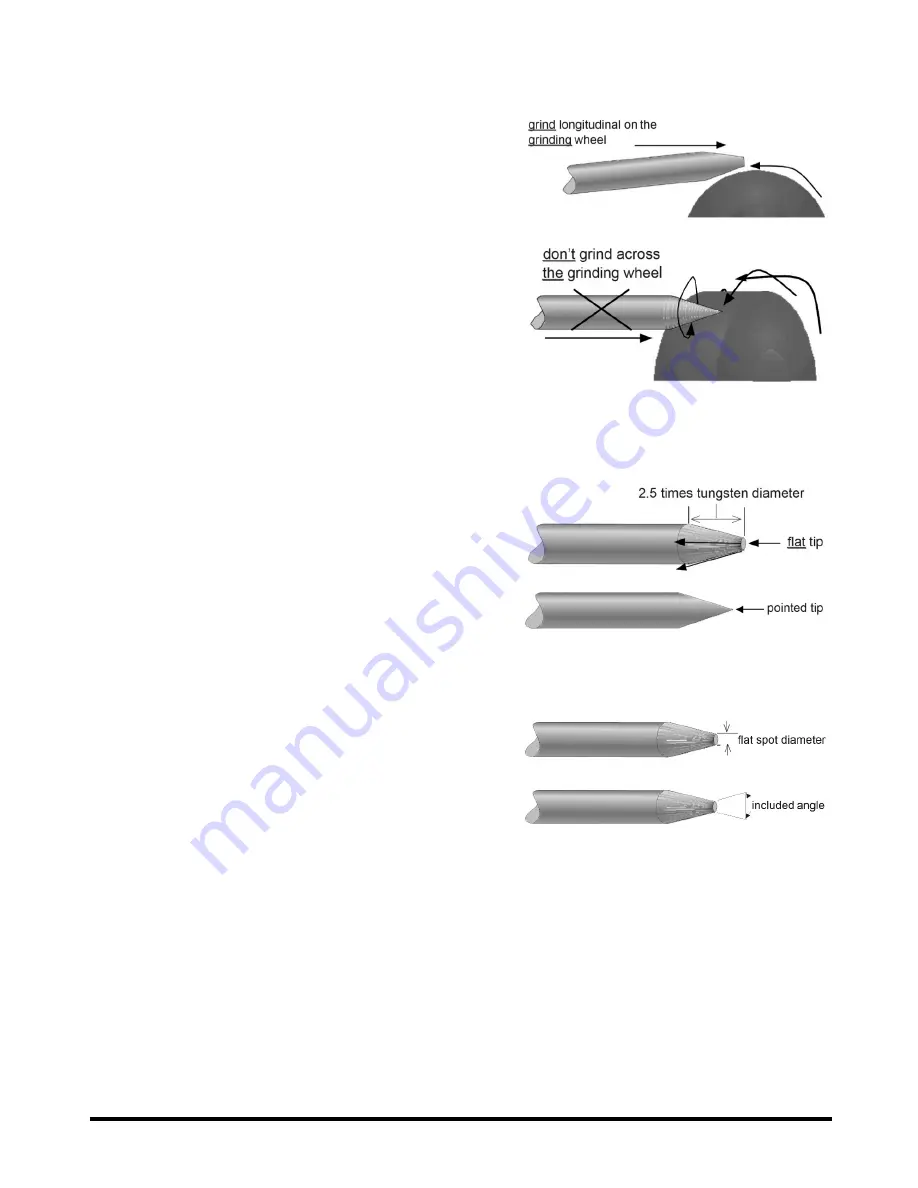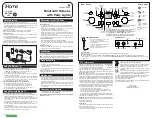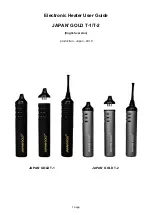
8611311
180 MULTI-PROCESS MIG-ARC-TIG WELDER
V1.0
26
For technical questions call 1-800-665-8685
TUNGSTEN PREPARATION
Always use a diamond wheel when grinding and
cutting. While tungsten is a very hard material, the
surface of a diamond wheel is harder and this makes
for smooth grinding. Grinding without diamond
wheels, such as aluminum oxide wheels, can lead to
jagged edges, imperfections, or poor surface finishes
not visible to the eye that will contribute to weld
inconsistency and weld defects.
Always ensure to grind the tungsten in a longitudinal
direction on the grinding wheel (Fig. 57). Tungsten
electrodes are manufactured with the molecular
structure of the grain running lengthwise and thus
grinding crosswise is ‘grinding against the grain’
(Fig. 58). If electrodes are ground crosswise, the
electrons have to jump across the grinding marks and
the arc can start before the tip and wander. Grinding
longitudinally with the grain, the electrons flow steadily and easily to the end of the tungsten
tip. The arc starts straight and remains narrow, concentrated and stable.
ELECTRODE TIP/FLAT
The shape of the tungsten electrode tip is an important
process variable in precision arc welding. A good
selection of tip/flat size will balance the need for several
advantages. The bigger the flat, the more likely arc
wander will occur and the more difficult it will be to arc
start. However, increasing the flat to the maximum level
that still allows arc start and eliminates arc wander will
improve the weld penetration and increase the electrode
life (Fig. 59). Some welders still grind electrodes to a
sharp point, which makes arc starting easier. However, they risk decreased welding performance
from melting at the tip and the possibility of the point falling off into the weld pool.
ELECTRODE INCLUDED ANGLE/TAPER - DC WELDING
Tungsten electrodes for DC welding should be ground
longitudinally and concentrically with diamond wheels
to a specific included angle in conjunction with the
tip/flat preparation. Different angles produce different
arc shapes and offer different weld penetration
capabilities (Fig. 60). In general, blunter electrodes
that have a larger included angle provide the
following benefits:
•
Last Longer.
•
Have better weld penetration.
•
Have a narrower arc shape.
•
Can handle more amperage without eroding.
Sharper electrodes with smaller included angle provide:
•
Offer less arc weld.
•
Have a wider arc.
•
Have a more consistent arc.
Fig. 58
Fig. 57
Fig. 59
Fig. 60
















































